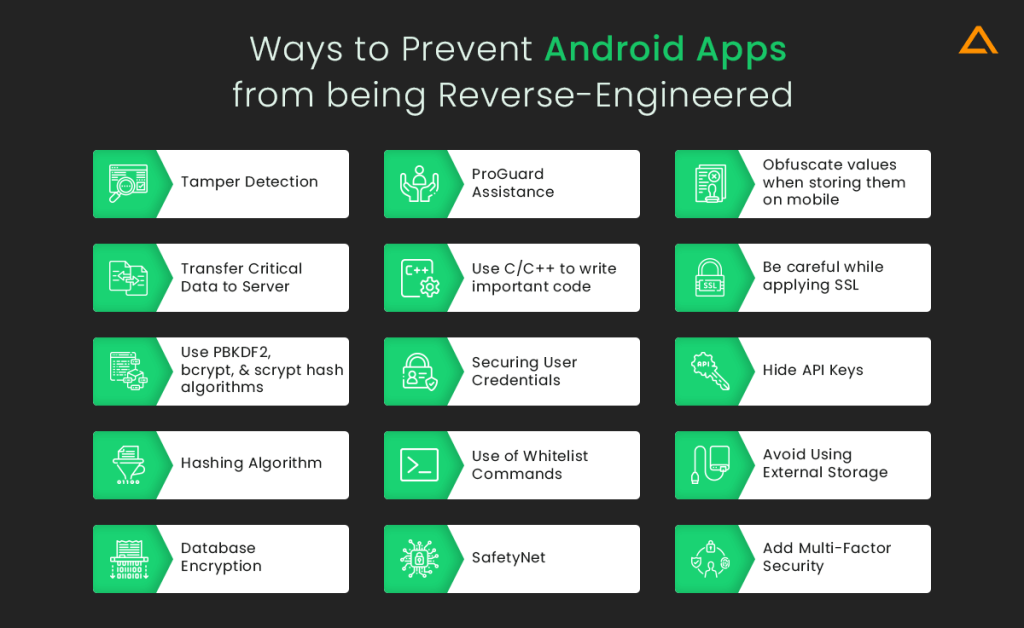Mobile App Reverse Engineering: Unveiling the Secrets Behind
Introduction
Dear Readers,
Welcome to this insightful article on mobile app reverse engineering. In this fast-paced digital era, mobile applications play a crucial role in our daily lives. However, have you ever wondered what lies beneath the surface of these apps? Reverse engineering is the key to unlock the secrets behind these mobile applications. In this article, we will explore the world of mobile app reverse engineering, its importance, and its impact on the digital landscape.

Image Source: aglowiditsolutions.com
So, let’s dive into the fascinating realm of mobile app reverse engineering!
What is Mobile App Reverse Engineering?
🔍 Mobile app reverse engineering is the process of analyzing and dissecting a mobile application to understand its structure, behavior, and functionality. It involves deconstructing the compiled code, examining the app’s binary files, and uncovering hidden features or vulnerabilities. Reverse engineering can be done for various purposes, including enhancing security, understanding competitor apps, or developing similar applications.
Reverse engineering allows developers, security researchers, and ethical hackers to gain a deeper understanding of how an app works, enabling them to identify potential flaws, optimize performance, or create innovative solutions.
Who Uses Mobile App Reverse Engineering?

Image Source: media-amazon.com
👥 Mobile app reverse engineering is employed by a diverse range of individuals and organizations. Developers utilize reverse engineering to understand the functioning of competitor apps and gain insights for creating better user experiences. Security researchers and ethical hackers use reverse engineering to identify vulnerabilities and enhance the security of mobile applications. Governments and law enforcement agencies may also employ reverse engineering techniques for forensic investigations or intelligence purposes.
When is Mobile App Reverse Engineering Used?
⏰ Mobile app reverse engineering is used at various stages of an app’s lifecycle. During the development phase, reverse engineering helps developers understand existing apps in the market and design features that cater to user needs. In the maintenance phase, reverse engineering assists in identifying and fixing bugs or performance issues. Furthermore, reverse engineering can also be employed after an app’s release to identify potential security vulnerabilities and ensure data privacy.
Where Does Mobile App Reverse Engineering Apply?
📍 Mobile app reverse engineering applies to both Android and iOS platforms. Android, being an open-source system, is more susceptible to reverse engineering due to its accessible code. However, iOS apps are not exempt from reverse engineering, as determined individuals can still analyze binary files and extract valuable information.
Why Mobile App Reverse Engineering is Important?
🔑 Mobile app reverse engineering holds immense importance in today’s digital landscape. It enables developers to gain insights from successful apps, identify trends, and create unique user experiences. Reverse engineering also serves as a vital tool for security researchers, allowing them to detect vulnerabilities before malicious actors exploit them. By understanding the inner workings of mobile apps, organizations can ensure the privacy and security of user data, fostering trust and loyalty among their user base.
How Does Mobile App Reverse Engineering Work?
🔧 Mobile app reverse engineering involves several techniques and tools. Decompilation, disassembly, and debugging are commonly used methods to extract the source code from compiled binaries. Specialized tools, such as IDA Pro, Apktool, and Hopper, aid in analyzing the extracted code and understanding the app’s behavior. Additionally, dynamic analysis techniques, such as hooking and instrumentation, allow researchers to observe and manipulate the app’s runtime behavior.
Advantages and Disadvantages of Mobile App Reverse Engineering
Advantages:
👍 Enhanced Security: Reverse engineering helps identify and fix vulnerabilities, ensuring robust security for mobile applications.
👍 Competitive Analysis: Reverse engineering competitor apps provides insights for creating innovative features and improving user experiences.
👍 Performance Optimization: Reverse engineering allows developers to understand and optimize code, resulting in improved app performance.
👍 Learning and Knowledge Sharing: Reverse engineering encourages knowledge sharing among developers, enabling the growth of the app development community.
👍 Innovation and Creativity: By understanding existing apps, developers can create unique and innovative solutions in the ever-evolving digital landscape.
Disadvantages:
👎 Legal and Ethical Concerns: Reverse engineering raises legal and ethical questions, especially when it involves unauthorized access to proprietary code or intellectual property.
👎 Privacy Risks: Reverse engineering may pose privacy risks if it involves the extraction of sensitive user data without proper consent or security measures.
👎 Malicious Exploitation: Reverse engineering techniques can be misused by malicious actors to create counterfeit or malicious apps, compromising user security.
👎 Intellectual Property Infringement: Unauthorized reverse engineering of apps can infringe upon intellectual property rights, leading to legal consequences.
👎 Resource Intensive: Reverse engineering requires significant expertise, time, and resources, making it a complex and challenging process.
Frequently Asked Questions (FAQs)
1. Can reverse engineering be used to steal someone’s app idea?
No, reverse engineering alone cannot steal someone’s app idea. It only enables the analysis of existing apps for understanding their functionality, not their conceptualization or originality.
2. Is mobile app reverse engineering legal?
The legality of mobile app reverse engineering varies depending on the jurisdiction and the purpose of reverse engineering. It is crucial to adhere to applicable laws, terms of service, and intellectual property rights.
3. How can developers protect their apps from reverse engineering?
Developers can employ various security measures, such as code obfuscation, encryption, server-side logic, and secure APIs, to make reverse engineering more challenging.
4. Can reverse engineering help uncover security vulnerabilities in mobile apps?
Yes, reverse engineering plays a significant role in identifying security vulnerabilities, allowing developers to patch them before they can be exploited by attackers.
5. Are there any legitimate uses of reverse engineering besides security analysis?
Absolutely! Reverse engineering enables developers to gain insights from successful apps, understand user preferences, and create better user experiences.
Conclusion
In conclusion, mobile app reverse engineering is a powerful technique that unveils the hidden layers of mobile applications, providing valuable insights for developers, security researchers, and organizations. While it offers numerous advantages, it also comes with ethical considerations and potential risks. Therefore, it is crucial to approach reverse engineering responsibly and within legal boundaries to ensure a secure and innovative digital landscape.
Final Remarks
Dear Readers,
Mobile app reverse engineering opens up a world of possibilities in understanding and enhancing the mobile app ecosystem. However, it is essential to remember that responsible usage of reverse engineering techniques is crucial to respect intellectual property rights and ensure the privacy and security of user data. Let us embrace the power of reverse engineering while upholding ethical standards, fostering innovation, and creating a safer digital environment for all.